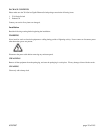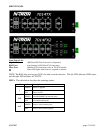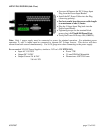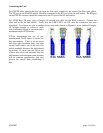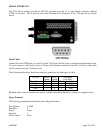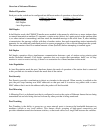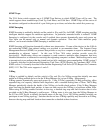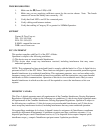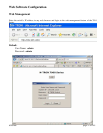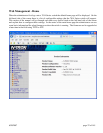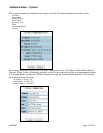
6/28/2007 page 17 of 145
Overview of Advanced Features
Mode of Operation
Each port on the switch can be configured into different modes of operation as shown below:
Copper Ports: 100Base Fiber Ports: 1000Base Fiber Ports:
- Half Duplex - Full Duplex - Full Duplex
- Full Duplex
- Auto Negotiation
Half Duplex
In half duplex mode, the CSMA/CD media access method is the means by which two or more stations share
a common transmission medium. To transmit, a station waits (defers) for a quiet period on the medium (that
is, no other station is transmitting) and then sends the intended message in bit-serial form. If, after initiating
a transmission, the message collides with that of another station, then each transmitting station intentionally
transmits for an additional predefined period to ensure propagation of the collision throughout the system.
The station remains silent for a random amount of time (backoff) before attempting to transmit again.
Full Duplex
Full duplex operation allows simultaneous communication between a pair of stations using point-to-point
media (dedicated channel). Full duplex operation does not require that transmitters defer, nor do they
monitor or react to receive activity, as there is no contention for a shared medium in this mode.
Auto Negotiation
In Auto Negotiation mode the port / hardware detects the mode of operation of the station that is connected
to this port and sets its mode to match the mode that of the station.
Port Security
Port Security provides a mechanism to detect any intruder in the network. When security is enabled on the
port, the port stops learning new MAC addresses on that port and if it receives any packet with a source
MAC address that is not in the address table, the packet will be discarded.
Port Mirroring
A Mirroring Port is a dedicated port that is configured to receive the copies of Ethernet frames that are being
transmitted out and also being received in from any other port that is being monitored.
Port Trunking
Port Trunking is the ability to group two or more network ports to increase the bandwidth between two
machines (switch or any work station). This feature allows grouping of high-speed connectivity and
provides redundant connection between switches, so that trunk can act as a single link between the switches.




